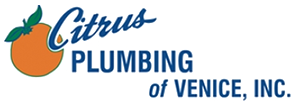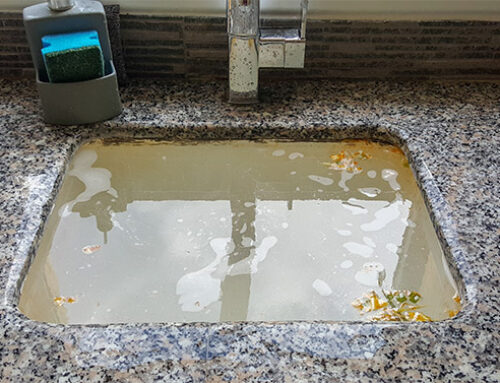For many homeowners, the garbage disposal is a bit of an enigma. Many people assume that anything is safe to put down the sink, but that is not the case. Before deciding to install a garbage disposal, you will need to understand what not to put in the garbage disposal to save time and money down the line.
At Citrus Plumbing of Venice, we are expert plumbers, and we know just how frustrating it is to have a stinky or broken garbage disposal.
Fortunately, we’re here to help.
Garbage Disposal 101
- A garbage disposal is installed between the underside of a sink and its trap.
- It uses a series of blades to mince waste small enough to be flushed away into waste plumbing.
- It is an environmentally friendly option and makes kitchen clean up a lot more convenient.
- This is the reason why a lot of Florida homeowners install garbage disposals into their homes to prevent future blockage and major damages to the sewer line.
However, there are limitations on what can go in a garbage disposal. It is definitely not suitable to process everything you would want to put in it.
For example, tough or sticky objects can stop the disposal blades from spinning or cause a clog.
What Can Go Down a Disposal?
There are many soft foods and liquids can be taken care of in a Garbage Disposal. In fact, some objects are even beneficial to disposal care.
This includes:
- Cold Running Water – It is recommended to use cool or cold water when the Garbage Disposal is running. You should keep the water on for ten seconds before and after using a garbage disposal to help carry waste down the drain. Without running water, it might lead to a clog or give off a bad odor if scraps get stuck to the bottom of the unit. It is also important to note that cold water will help carry any unexpected fat down the drain pipes, preventing you from any future headaches.
- Ice Cubes – Ice cubes help to clean and sharpen disposal blades. It’s a good idea to toss a few ice cubes down the drain every other week to make sure debris isn’t building up on your disposal blades. Ice cubes made with a few drops of lemon juice, vinegar or biodegradable cleaning products can help freshen up your disposal unit even more. It is important to note that some garbage disposal units have impellers instead of blades. When this is the case, the use of ice cubes is not necessary.
- Citrus Fruits- Putting citrus fruits like lemons or oranges down a Garbage Disposal can serve two purposes. On one hand, the acid inside of citrus fruits helps break down built-up gunk inside of a garbage disposal. On the other hand, citrus fruits can effectively cut down bad odor and replaces it with a fresh fragrance. You can simply cut your fruit of choice into wedges and run it down one at a time with cold water.
- Biodegradable Dish Soap or Disposal Fluid – Too much grease is a disposal’s worst nightmare. The anti-grease chemicals in dish soap and draining fluid help flush out grease, allowing the disposal to run better and last longer.
What Not To Put in a Garbage Disposal
Common sense can only take a person so far when it comes to what not to put in the garbage disposal. Some of these items may not be obvious to you.
Here are 7 things you should not put in a garbage disposal:
- Coffee Grounds – This is one of the biggest no-no’s when it comes to a garbage disposal or any drainage system. When coffee grounds enter the drain, it forms a thick and dense paste. If too much goes down the drain, it can create a clog or slow down the draining process. It is best to dispose of them in your compost bin or use them in your garden.
- Grease – Fats and grease are one of the most important items to not put down a garbage disposal. As fats cool down, they solidify. Without proper flushing that pushes the fats further down the line, it can sit on the bottom of the disposal unit, creating drainage and clog issues. You should avoid running fats and grease down the garburator however fat can be inevitable for some common food like salad dressing, etc. Be sure to run the food scraps down the drain with cold water so the fat can remain solid as it passes through the disposal and into the drain pipes.
- Eggshells in Disposal – Can you put eggshells down the garbage disposal? The answer is no. Eggshells are a common mistake to put down a disposal. A common myth is that eggshells can help sharpen the blades. While the shells do not have a major positive or negative impact on the disposal blades, the membrane on the inside of the shells is a different story. This is the thin coating found inside of an eggshell. It can wrap itself around the blades of the disposal, get loose and lodged into the impeller or create a sticky blockage inside your plumbing.
- Onion Skins – Similar to an eggshell, onion skins also have a skin membrane on the inside of the skin. Because this layer of membrane is quite thin and wet, it can easily get through the blades and end up wedged in the drain that can cause a blockage.
- Potato Peels in a Garbage Disposal – Similar to onion skins, potato peels can be thin enough to slip through the blades. Potato peels in a garbage disposal could fall through the disposal without being minced finely. This causes a barrier in a sink trap which could lead to a clog.
- Hard Foods – Bones, nuts, pits, and other hard food scraps are too tough for disposal blades to cut through. This can cause the blades to jam or damage them significantly.
- Dry Expandable Foods – Foods which expand in water like pasta, oats, and rice will continue to expand in a sink’s plumbing system, leading to an eventual clog. Like most food scraps, if it’s a small piece or a few left on a plate after your meal, it should be fine to run through the disposal. Please keep in mind to run the food with cold water to flush it through the trap and into the main sewer line. This will prevent the food from staying and expanding at the bottom of the unit, causing a future blockage.



